| Umělec magazine 2007/4 >> (in)visible art | List of all editions. | ||||||||||||
|
|||||||||||||
(in)visible artUmělec magazine 2007/401.04.2007 Rubén Bonet | borderlands | en cs de es |
|||||||||||||
|
If art has died, or the audience has withered away, then we would find ourselves free of two dead weights. Hakim Bey
Our position is that of fighters between two worlds, one we don’t know and one which no longer exists Raoul Vaneigem inSITE 05. Art Practice in the public domain. San Diego/Tijuana At a cost of two million dollars, the inSITE 05 art-action was presented along the frontier region dividing San Diego, California from Tijuana, Mexico—a setting in which Tijuana was the laboratory, San Diego the privileged spectator and (in)visibility the central concept. This as-of-yet latest inSITE event, in 2005, was the brain-child of Cuban critic Osvaldo Sanchez who, with intelligence and intellectual ambition, directed an army of curators to produce a project aspiring to introduce contemporary art to an intellectual terrain fertilized by the theories of the Situationist International. This would be to enable a new art— a detonator of changes in the social environment, a transforming factor of reality incorporating principles of unitary urbanism, psycho-geography, detournement (drifting, heuristic understanding of the urban space) and also by the ideas inspired by Guy Debord critique of culture’s spectacularization and the intellectual anorexia imprinted by mercantilism — a capitalist ritual that transforms commercial goods into royalty without regard for their symbolic value. As a concept, the urban has become an enticing field of activity for contemporary art. Definitions are tossed about indiscriminately, even abused: public space, urban environment, the public domain. Altogether, they speak of some scenographer’s conception a city-wide scale. In this 2005 edition, inSite altered its direction, abandoning the site-specific temporal sculptures (the symbolic urban monument) that had been characteristic since its first edition, in 1992—always under the executive tutelage of Michael Krichman and Carmen Cuenca—to approach a new public art practice that would transcend any historical notions defined by objects or actions presented in open space. This has aroused the art world’s evolving interest in engaging with the context ethically. Also, a social movement, with political goals inherent to these initiatives, continues transforming this aesthetization of urban dysfunction into a governmental epic. As a result, against its original aspirations of achieving a civic consensus regarding the use of public space (the true political practice according to Osvaldo Sanchez), that which is known as public art has ended up being co-opted as a symbolic institutional production. SOCIAL FABRIC The inSite projects have examined the conurbation along the Mexico-United States frontier as a social network, the survival of which depends upon the ebb and flow of people, products and information. This implies a tolerance of this transnational corridor as a system of communicating vessels with soft spaces that fluctuate as interwoven, porous membranes filtering that flow. That would also have include the narcotics-tunnels, had not inSite’s policies of exclusion have proscribed any engagement with such issues. Indeed, the show did not aspire to any form of political or social activism; rather it sought to assemble a creative coctail that could be detonate new situations into that fabric. Such artistic practice pretends to act as an outlet for those communicating vessels, interpreting the public domain as Pierre Bourdieu’s “places of representation that have been denied to society.” Indeed, it’s a practice of public art focused not on creating consumers of mass culture in open forums, but on temporarily summoning heterogeneous communities with the aim of collaborating on art of the social subject, free from alienation. CONVERSATIONS With Osvaldo Sanchez as curator of the pivotal center of the event, there were 22 sections entitled Interventions. The area of Conversations, with Sally Yard as curator, was conceived as a collection of dialogues, workshops, conferences and publications that produced, along with the curatorial apparatus, the ideological substance of the projects and a large part of the public presentation of inSITE. It was developed from August to November 2005 in four weekends of project presentations and associated activities. These dialogues delt with concepts such as Liminal Zones/Fluctuations in course or Foreigners, inhabitants and cosmopolitans, with essays by scholars including Manuel de Landa and Suely Roinik, the architect Teddy Cruz who built a documentation and map center for San Diego —infosite –(the other one is in the Tijuana Cultural Center, Cecut in Spanish, which was to have been built by Torolab but the project was aborted), the prestigious curator Ute Meta Bauer (who is in charge of the Mobile Trans-Frontier Archive), and the critic Magali Arreola, who addressed the phenomenon of Micro-Nations phenomenon. FARSITES The other two components that integrated inSITE 05 were the bi-national exposition (San Diego Museum of Art and Cecut) entitled Farsites/Sitios Distantes, directed by the Brazilian curator Adriano Pedrosa who oversaw five additional curators, and Stages: network projects, live events and the archives that emphasized conditions of temporality, the un-objectivization of the discursive supports and the transcendence of spatial conditions. Within the main framework of inSITE, Intervenciones reveals that one of its most important and distinctive aspects is the ongoing interactive nature of the projects. Most of the projects were a product of various artists’ on-location residences. They instigated interactions between curators and local artists who re-defined and re-wrote the project as it went forward, which also depended on the responses of the community to the individual projects. INVISIBILITY This communal character ensured that the results remained effervescent, a concept dear to the ideas of contemporary art—and which promotes its own commercialization with “works” or media use as an “artistic” activity. Moreover, the support structures surpassed the conventional methods of representation by subverting mass media, working with utopian group-therapies, reinventing urban space and engaging politically. They shifted away from the spectacular/media conceptions to become part of the social network on different levels of (in)visibility. Ruben Mano’s Object-Process is illustrative, featuring buttons with the word “Visible” handed out to pedestrians crossing the border with no explanation. There is also Ramirez Jonas’ My House, Your House, in which the trust of the spectator is challenged when they are asked to blindly exchange their house keys. “The Good Rumor Project” by Mans Wrange, consisted of a network for spreading rumors dreamed up by those living on opposing sides of the border; on the American side, “good” rumors about their Mexican neighbors were spread around and vice versa. These had unmeasured repercussions since one of the phases of the spreading of the “rumors” transpired on the internet. The visual presentation of this work was represented in a San Diego store window, with two TV monitors showing the people who disseminated the rumors being interviewed, but instead of spoken words, there was music. This degree of (in)visibility is incomprehensible to anybody unaware of the details of the project, and especially the minutia of the “process” –an artistic practice in the public domain that ignores the category of the audience, conceived as a passive spectator. An essential question for a complete understanding of what was being watched, was Wrange's, exists as reference in different urban sites, chosen and appropriated as spaces of representation, without any curatorial explanation, without any “wall text.” Getting to know each intervention, in situ, was a treasure-hunt, with map in hand—centered in San Diego. In Tijuana, hardly anyone wanted to participate; indeed, some places in which these interventions were located were nearly impossible to get to. The frustrated project by Josep Maria Martin is a case in point: a prototype for a successful migration. For this, a module for the reception of deported or returned workers failing to cross the border, equipped with games and basic amenities was located in a marginal neighborhood with difficult access, donated by inSITE to the YMCA. But sometimes, along the border, especially under certain socially defenseless conditions, the most basic of goods end up being a true luxury. Martin’s initial project looked a lot like a military training camp to advise migrants about the dangers and potential for success in the border crossing. Evidently, the American side of inSITE, where the real organizers of this mega project truly were—the Mexican institutions were merely just supernumeraries for the parody of the bi-national staging—the experiment was ordered to stop. Crossing into the United States is a criminal activity; this could not be negotiated. Martin resigned… That’s politics. With similar uneasiness, Judy Werthein created an athletic shoe brand for the occasion called Brinco (Jump) and equipped the shoes with many accessories assumed to assist those who’d be crossing the border illegally, including a coin holder and a place to keep maps; these shoes were given free to migrants, but they could also be sold as unique works in an expensive San Diego boutique—where the illegals, if successful in their crossing, could bring the shoes to be re-sold. Brinco was one of the few projects that caused controversy in the San Diego media, when they questioned the validity and pertinence of an artistic act that promoted “criminality.” There was also a project with thirteen mini water-purifiers—The Dirty Water Initiative by the Simparch collective—located at a pedestrian crossing between Mexico and the United States; at the end of the event, these were donated to marginal neighborhoods where water is in short supply. Another Farsites participant, Mark Bradford, gave out vests, carts and ID buttons to the luggage carriers who operate in that area and who are, even today, disorganized and without any union protection. What was seen on all the TVs of the world was the jump by Dave Smith, the most famous bullet-man in the world, flying over the border from Playas de Tijuana, above the wall under construction (they were doubling it in height) as part of the intervention One Flew Over the Void/Lost Bullet by Javier Tellez with the collaboration of inmates from a mental asylum of Mexicali, a frequent practice by the artist. The inmates came up with the idea of flying over the border and, in a several-month long workshop, made a gigantic quilt with bi-national symbols. It was placed on the wall on the day of the flight, which was the day of inSITE’s inauguration when authorities and celebrities came together in this symbolic zone. Many municipal authorities had assembled anyway because that same day La Esquina/Jardines the Playa de Tijuana was being inaugurated. A project by Thomas Glassford and Jose Parral designed a little garden with endemic plants and new sanitary facilities for the beachcombers of Playas with a roof functioning as a looking glass towards the paradoxically named “Friendship Park,” on the American side. The building was more like civic architecture or a municipal facility than art. The cost of the restrooms—an infrastructure of dubious permanence intended later to serve as an endowment of services to the community—exceeded 40,000 dollars. Production money was not exactly absent, considering each of the projects received 20 thousand dollars and the artists 5,000. In local and international media coverage nobody ignored the presence of a young and famous Mexican starlet in this event. Indeed, in many cases the main news item was an action, originally conceived by Javier Téllez as no more than an exotic pretext. However, in none of the commentaries was there any indication that the action was the product of a process working with residents of a psychiatric institution. Among scattered details coming from “cultural” reviewers—who add flavor to our lives with their usual negligence and informative rushes, and part from the (in)visibility of inSITE, though in the case of this intervention, the media presented a portrait of joyful madness: at last something that could be “seen,” something concrete to review –including personalities- at last there was something that fits the spectacular notion and happens in a concrete moment in time. The truth is that this was the result of a somewhat chaotic performance of a municipal band, the patients from the institution walking around on stage and a cheering lady, as if in a children’s party, shouting nonsense under the seering sun; the whole scene was akin to a circus. It was the closing party of a collective project, to which, the inSITE organizers invited all the elegant world of the international art scene. Border residents and the media—all hounded by heat and impatience—didn’t really know what to think about all this, particularly in Playas, a really weird place. You know, a little joke (an intellectual hand grenade) in the epater les bourgeois style. It was Situationist trash, though the atmosphere enhanced with an excessive number of police and personal bodyguards. With this act, Fundacion Televisa, one of the sponsors of Farsites, wrote off its “donation” to the project by selling images, exclusively, to TV stations around the world. Here’s one of the many contradictions of inSITE with its own curatorial discourse, in this case about spectacularity. Was the Tellez action a fortunate media casualty? Or was it a concession to the capital that feeds off the gigantic machinery that is inSITE?... The enigma remains. Antoni Muntadas worked with media—TV in his case—as support for his video On Translation: Miedo/Fear, made with the cooperation of Bulbo. It consisted of interviews with well known personalities and common folks from both sides of the border. They spoke about the border and fear. The images incorporated invoked the contention and division among the two countries for a program broadcast by a local Tijuana TV station. Tijuana native Itzel Martinez was also located within this category of audio-visual documentation, with two documentaries. Let the street sound (2002) was based on the testimonies of four former teenage junkies immersed in Tijuana’s marginal neighborhoods, made by YonkeArt, the collective. The document Recuperation City, picked up the group dynamic with several patients of a rehab center, who, with active participation in the use of the cameras, designed a social utopia based in their desires and projections, in a year-long process of interviews and group dynamics generated by the artist. Another process of documentation was Osmosis-Excess, a video by Aernout Mik showing images of yonkes (border slang for junk yards) that occupy vast expanses of land situated amid the canyons and the outskirts of Tijuana, together with a fictional drugstore flooded with mud, alluding to a landscape where the circulation, consumption and transportation of goods have transformed the urban landscape such as the case of the well known Revolucion Avenue, formerly famous because it housed the largest bar in the world, but has since become the densest concentration of quasi drug stores. The video, with images featuring miles-of junk graveyards, was projected onto a San Diego parking lot, giving the drivers of luxury cars that circulate through downtown San Diego a glimpse of the rusted future awaiting their expensive machineries—though probably they just did’t care. After all, in two years they’ll be behind the wheel of a new one. The same obsession to subvert the border area automobile market was demonstrated by Joao Louro with The Jewel/In God We Trust. This project consisted of finding a dilapidated European luxury car in one of Tijuana’s junk yards, covering it with gold leaf and exhibiting it in the Ferrari-Masserati dealership in South California, located in the exclusive La Jolla area, where it would ultimately be auctioned. These things have little to do with contemporary art; they are minor incongruencies of artistic projects in the public domain that escaped from the “white cube;” what’s the difference if it’s a gallery or a luxury dealership? La Jolla, the spiritual bastion of inSITE’s sponsorship, was particularly interested in this. The “audience” that has less money could organize a dozen inSites for their personal gratification and that of their selected friends (many of them private collectors or members of art-supporting foundations). The exclusive parties and VIP meetings was another inSITE process carried out throughout the years and certainly, one of the more (in)visible and less public. Another intervention in the spirit of the exhibition concept was the work Air Bridge, in which Maurycy Gomilicki introduced members of model airplane clubs on both sides of the border to each other; they worked together to create new aircraft models to test-fly over the dry bed of the Tijuana river. Similar was Hospitality, a work made by the duo Barbosa and Ricalde over a crowded pedestrian bridge crossing the same river consisting of a colorful carpet, checkered with different names, such as the bracelets sold to tourists. A Certain amiable Monster by Christopher Ferreira was an eccentric mobile DJ unit made from car scraps, a work that mades a clear reference to the strongly rooted automobile culture of southeastern California. The account of the most relevant Interventions, an area of actions to which the exposition Farsite/Sitios Distantes should serve as a complement, but which ended up having a relevance of its own, at least for the media, confronted with the (in)visibility of most of the projectsthat Osvaldo Sanchez was in charge of. This exposition, that brought together the work of 52 artists from 23 countries, was bi-national, and two of the most important art institutions in both sides of the border were involved—a first in the area. Urban crisis and domestic symbols in recent contemporary art is the subtitle of this exhibition. The curatorial discourse by Adriano Pedrosa in this “white cube” exposition is centered on the theme of the urban crisis brought up by modernity in five cities: Buenos Aires, Caracas, Mexico City, Sao Paulo and New York, one for the assistant curators, each of whom came up with an independent approach. This crisis of modernity is approached from different perspectives. The curator appointed by the City of Buenos Aires, Santiago Navarro, spoke of how the crisis provokes new relationship models in the affected communities and illustrated this with works from the Taller Popular de Serigrafia, brochures, and a video of an assembly of the Palermo Viejo neighborhood association, one of many that appeared after the collapse of the Argentinean economy. Julieta Gonzalez, representing Sao Paulo, participated with a presentation entitled Art and architecture facing informal urban conceptually compatible with the work Ambulantes (street vendors) by Francis Alys, photos of the mobile structures used by the peddlers of informal services and commerce, or with the sculpture by Davila, Fake Column, columns made of cardboard boxes mimetic of the architecture of the exposition hall. From the perspective of Mexico City, Ana Maria Malle spoke of how in Latin America, before modernity could be achieved, a Utopia would be declared with the city of Brasilia. The city had been erected as a symbol of ultra-modernity and progress in the 60s but its streets remain vacant today. The city is emotionally vacuous. She illustrated this notion with urban photos by Cao Guimaraes, the architectural intervention by Zamora in the Carrillo Gil Museum and a piece by Damian Ortega, consisting of seven chairs and a table in a difficult vertical equilibrium, from the series Constructions. Carla Zacagnini’s presentation, Restless Cities, centered on the moments and places where that which seems un-apprehensible is crystallized, slippery and fleeting; from the hanging lines, tables with cutlery in the open, even road-crossings are seeing as valuable spaces for the advertising communication, as illustrated by the photographs by Sean Snyder. Betti-Sue Hertz spoke on the architectonic fragment, extractions and cuts of the urban, quoting the work by the architect Gordon Matta Clark, an idea into which the works by Pedro Cabrita Reis and Rivane Neuenshwander/Cao Guimaraes inscribe, for example. Because this exposition did not try to present the latest works by guest artists, this was not a typical exposition but, in many instances, it was structured starting from works already made inscribed within the curatorial profile that carried a heavy load in this exhibit. In painting, for example, there was a pair of pieces, the rest had to do more with urbanism, its realities and its poetry, literally rescued using physical fragments of streets, cobblestones, bricks, architectural constructions. Photographs of closed commerce, photographs of the city of Genoa practically under siege (by Armin Linke) by people opposing globalization, photographs of empty streets, urban landscapes captured in video from a moving car projected at high speed. As representation of a moment of crisis, documentation was shown of the three historical black-outs suffered by the New York City, an even an austere toilet, Dry Toilet by Marjetica Potrc, scaled, that could have been removed from a marginal neighborhood in any Latin American city, and placed in the middle of one of the elegant halls of the San Diego Museum of Art, within the Balboa Park architectonical complex. The theme of the urban crisis was sufficiently illustrated with desolated spots in Latin American cities (unfinished projects) in what seems to be a topic of chaos in urban planning and disillusionment, the idea of progress already abandoned. In this exhibit that speaks of urban models in crisis the lack of documents in certain urban areas of the cities in the United States wass evident, where desolation rules, first world desolation, colder if that’s possible. With false modesty… such is life, and of the very powerful and paternalist watch towards the spoiled backyard that is Latin America, as if this crisis only blossoms in the South side of the border. As an experiment, inSITE was doomed to create and suffer contradictions. It was a public art activity that only the scholars understood, and also, it took advantage of “white cube” exhibitions, media performances, “auctions” of artistic objects and a lot of reproachable matters, as it happens with the media because it did not fulfill the “spectacular” expectations of any event worth of broadcast nowadays, whether a sport final or an art exhibition. But inSITE was not about that. Undoubtedly, it was a risky experiment, and, developing in time provided, it had an a priori unpredictable character; everything was solved at the last moment in a determined attitude in front of the dynamics of sense production, by then, strongly medialized. The answers to the dynamics created by inSITE depend on how well they were received in the communities. For example, most of the Tijuana artists turned their backs to a project that was developed in “their” community, in spite of that, at the time of the auction they were deeply concerned about it being exhibited as made in Tijuana, something that has been winning ground among curators of foreign activities. This was with the rather dubious attitude of "if they don’t invite me to participate I turn a deaf ear." Many of them merely waited for the parade of international curators, hauled by inSITE, to sell themselves in the same way to the curious on sale in the line, but just as the tourists. Indeed, there are many who were absentminded and hungry for border-exotics curators. But the immoderate consumption of crystal or ice, a chemical originated by the military for endurance —whether in the battlefield, the maquila companies or the nightclubs of the North side, by many, but not all of the Tijuana artists, especially those dedicated to the audiovisual—accelerates them way too much and makes them insensitive in front of the public. They have no time, their works are the product of wantonness, insomnia and arrhythmia, without the possibility of any articulated discourse, provoking the “something” peculiar to the art from Tijuana: the aesthetics of the methamphetamine: here it won’t be elegant to mention any examples. This artist doesn’t really need any articulation, that’s what the avid foreign curators are for, with their delirious, and stereotypical, discourses about the border condition. It is also noteworthy that the important guests arriving from Mexico City—curators, critics, the press—to the week-end presentations were housed in hotels in San Diego. As a matter of fact, that’s where all the flights landend, and they only went on safari to Tijuana in little buses provided by inSITE. The one who pays rules. Tijuana is a social laboratory where even the homeless wear Converse shoes and in the “red” zone everything is allowed 24 hours after each club pays a 50 thousand pesos annual “tax” to the municipal government ruled by the infamous PRI political party. In the best Al Capone tradition, everything, means prostitution of minors or the selling and indiscriminate use of all kind of drugs— basically ice at 50 pesos in a little plastic bag—activities that have nothing to do with (in)visibility. To call Tijuana a social laboratory is nothing in a place where the enlargement of the Cecut –the only place dedicated to art- with a very needed exhibition hall is paid for by the Ministry of Tourism. Far from establishing an artistic tendency or style and, for that matter, establish a unique and permanent program, inSITE defines itself as an affirmation of the vital and creative possibilities of the collectively organized individual, overcoming any kind of determinism, beginning with the outdated “artistic” determinisms. Based in this definition, inSITE becomes a tactical legacy for future performances that no doubt, will change the course of the art world. Another question remains in the air: the object abolished, the “spectacle” abolished, understanding art as a political practice… how are the artists going to live? Not even the Situationists would have an answer. Well, they would; but they failed. It’s been fifty years and society continues on its suicidal and consumerist run, despising any experience with symbolic value.
01.04.2007
Recommended articles
|
|||||||||||||
|
04.02.2020 10:17
Letošní 50. ročník Art Basel přilákal celkem 93 000 návštěvníků a sběratelů z 80 zemí světa. 290 prémiových galerií představilo umělecká díla od počátku 20. století až po současnost. Hlavní sektor přehlídky, tradičně v prvním patře výstavního prostoru, představil 232 předních galerií z celého světa nabízející umění nejvyšší kvality. Veletrh ukázal vzestupný trend prodeje prostřednictvím galerií jak soukromým sbírkám, tak i institucím. Kromě hlavního veletrhu stály za návštěvu i ty přidružené: Volta, Liste a Photo Basel, k tomu doprovodné programy a výstavy v místních institucích, které kvalitou daleko přesahují hranice města tj. Kunsthalle Basel, Kunstmuseum, Tinguely muzeum nebo Fondation Beyeler.
|























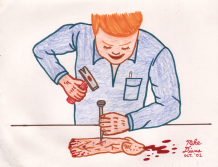




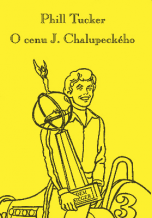
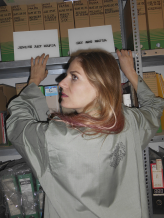
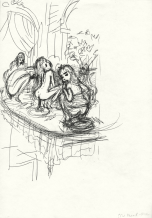
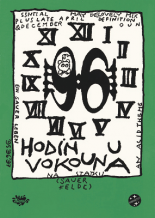


 New book by I.M.Jirous in English at our online bookshop.
New book by I.M.Jirous in English at our online bookshop.
Comments
There are currently no comments.Add new comment